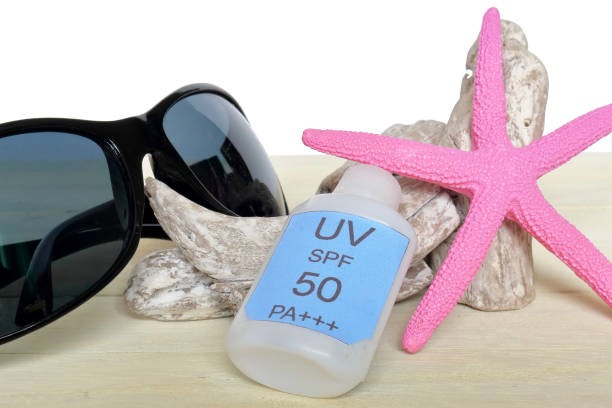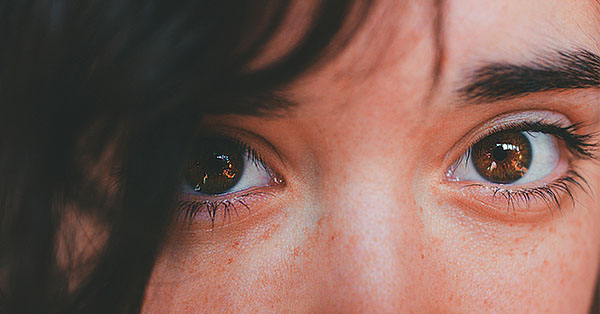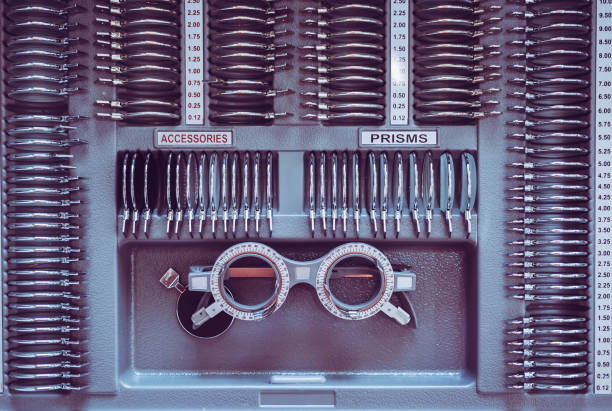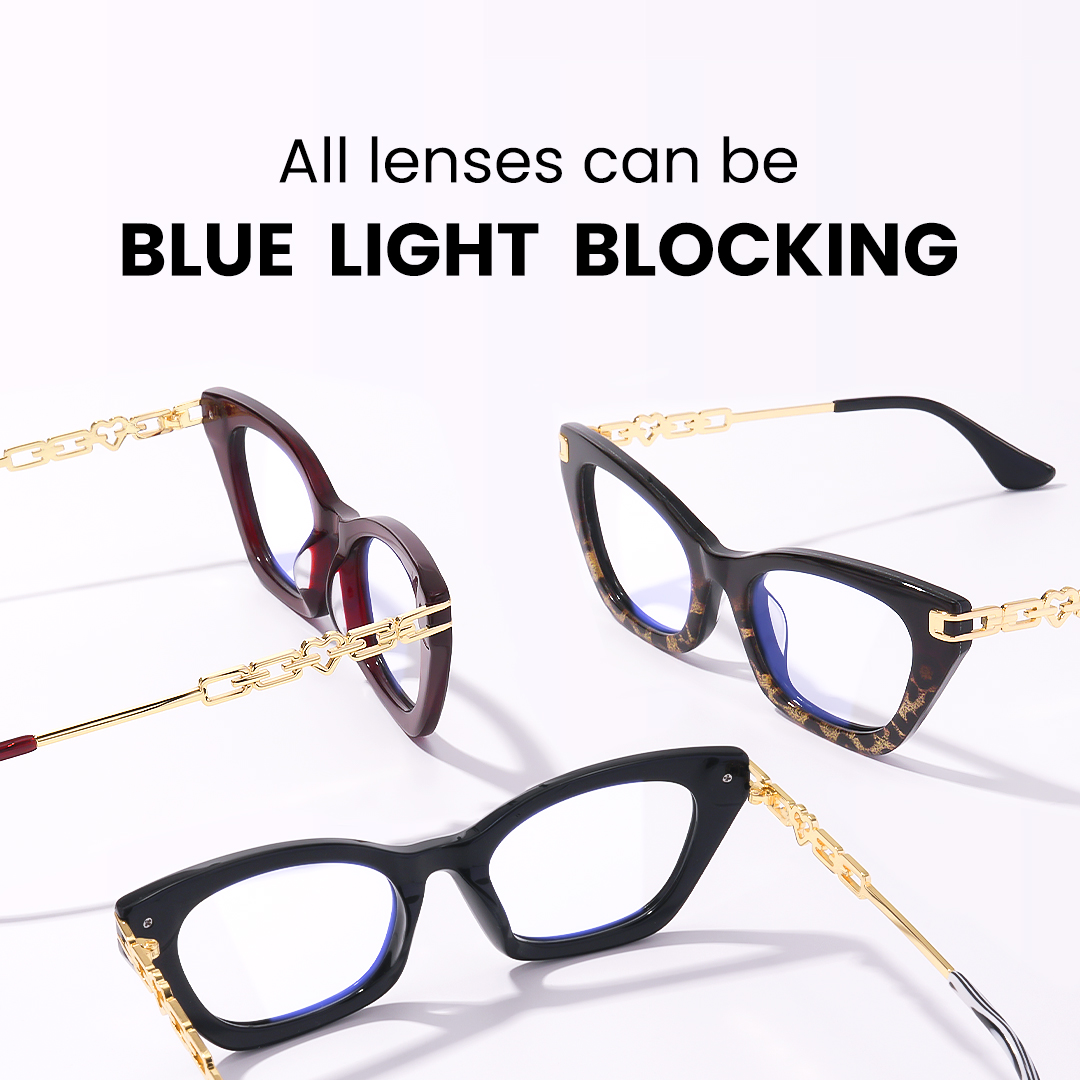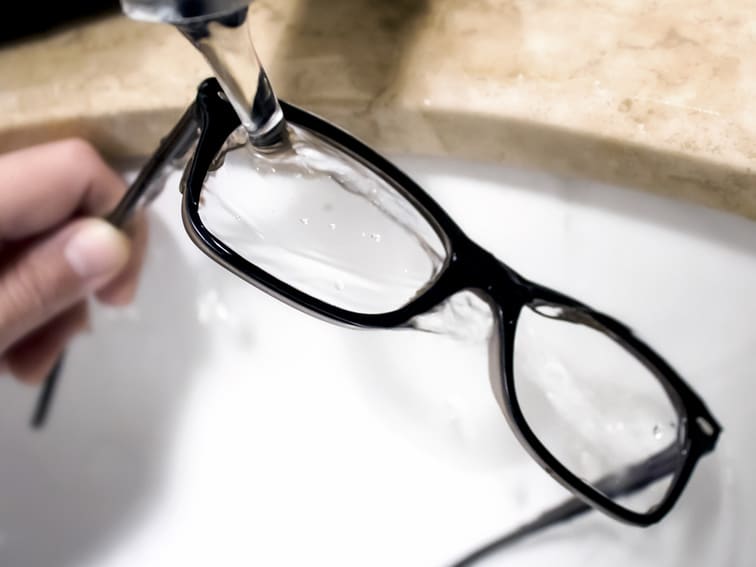
What Glasses Suit My Face? Best Frames for Your Face
February 27,2023

What is Boho Style? A Comprehensive Guide to Boho-Chic Fashion
February 13,2025

Virtual Glasses Try On - Find Your Perfect Pair Online
April 02,2024

UV Protection Glasses VS. Blue Light Glasses - Vooglam
July 20,2023

Newest Style Modern Trendy Mens Glasses | Vooglam
March 01,2024

Stylish Reading Glasses: Blending Fashion with Functionality
February 16,2023

What are photochromic lenses & glasses?
September 22,2023

Brown Eyes: The Beauty of the Most Common Hue
September 01,2024

The chubby face glasses for round face female
August 02,2023

What are prisms in eyeglasses?
March 20,2023

What are Bifocal Lenses? - Vooglam
April 14,2023

How to Read Your Eyeglass Prescription?
March 11,2023
How to Convert Your Glasses Prescription to Contact Lenses
Ever stared at your glasses prescription and wondered if you could just use those same numbers to order contacts online? You're not alone — but here's the plot twist that might surprise you: your glasses and contact lens prescriptions aren't actually interchangeable. While they're based on the same vision correction needs, the way they work on your eyes is completely different.
The distance between your glasses and your eyes versus contacts sitting directly on your cornea changes everything about how light enters your eye. This guide will walk you through exactly why these prescriptions differ, how eye care professionals make the conversion, and what you need to know before making the switch. Whether you're curious about the science behind it or ready to ditch your frames for contacts, we've got you covered.
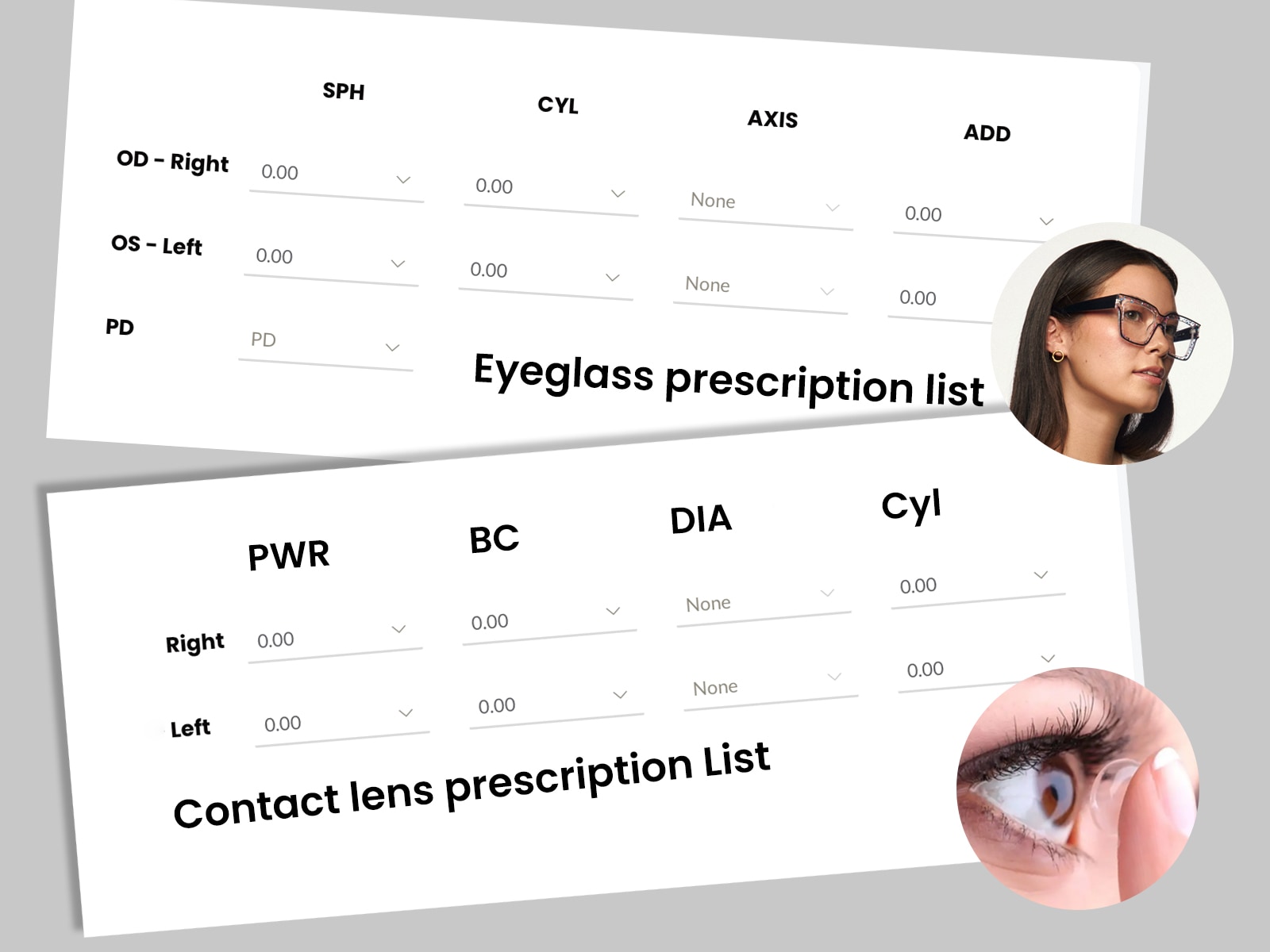
Why Glasses and Contacts Prescriptions Are Different
The main culprit behind prescription differences is something called vertex distance — the space between your eye and your lens. Your glasses sit about 12-14 millimeters away from your eyes, while contacts rest directly on your tear film. This might seem like a tiny difference, but it dramatically affects how light bends to reach your retina.
Think of it like adjusting a flashlight beam. Move the flashlight closer to the wall, and you need to change the focus to keep the same sharp circle of light. Your eye works similarly — when the corrective lens moves closer, the prescription power needs to be adjusted to maintain clear vision.
The lens curvature also plays a crucial role. Glasses lenses are flat and unchanging, but contact lenses need to match your eye's natural curve. This means contacts require additional measurements like base curve and diameter that simply don't exist in glasses prescriptions. Higher prescription strengths see more dramatic changes during conversion, especially for powers above +/-4.00 diopters.
Key Terms You'll See on a Prescription
Understanding your prescription is like learning a new language — once you know the key terms, everything makes more sense. Here's what those abbreviations actually mean:
OD/OS/OU represent your right eye, left eye, and both eyes respectively. SPH (Sphere) indicates your basic nearsightedness or farsightedness correction. CYL (Cylinder) and Axis work together to correct astigmatism by addressing the irregular shape of your cornea. ADD appears on prescriptions for people who need multifocal or bifocal corrections.
For glasses, you'll also see PD (Pupillary Distance), which measures the distance between your pupils to ensure proper lens alignment. However, contacts have their own unique measurements: Base Curve (BC) determines how the lens curves to fit your eye, while Diameter (DIA) specifies the lens width. These contact-specific measurements are why you can't simply transfer glasses numbers to contact orders.
Can You Convert Your Glasses Prescription to Contacts by Yourself?
The short answer? Not accurately — and here's why attempting a DIY conversion could leave you seeing less than your best.
While online conversion calculators exist, they only provide rough estimates based on sphere power adjustments. They can't account for your unique eye shape, corneal curvature, or how different contact lens materials interact with your specific tear film. Your eyes deserve better than guesswork, especially when it comes to something as important as clear, comfortable vision.
Contact lens fitting involves much more than number crunching. It requires measuring your corneal topography, assessing your tear production, and evaluating how your eyelids interact with different lens designs. This personalized approach ensures your contacts not only correct your vision but also maintain eye health and comfort throughout the day.
How Optometrists Convert Glasses Prescriptions to Contacts
Eye care professionals follow a systematic approach that goes far beyond simple mathematical conversion. The process starts with corneal topography mapping, which creates a detailed 3D map of your eye's surface. This reveals the unique contours that determine which contact lens design will provide optimal fit and vision.
Next comes the vertex distance adjustment. For every millimeter the lens moves closer to your eye, the effective power changes. Optometrists use established formulas to calculate these adjustments, typically reducing the sphere power for higher prescriptions. For example, a -6.00D glasses prescription might convert to approximately -5.75D for contacts.
The fitting process includes trial lenses to test comfort, movement, and vision quality. Your eye care professional evaluates how the lens centers on your eye, whether it moves appropriately with blinking, and if the vision remains stable during normal activities. They may try multiple lens types or brands to find your perfect match, ensuring both immediate comfort and long-term eye health.

Understanding Conversion Tools and Calculators
Several online tools claim to convert glasses prescriptions to contacts, with varying degrees of accuracy. These calculators typically focus on sphere power adjustments using vertex distance formulas, but they miss crucial elements like astigmatism correction and individual eye measurements.
If you're curious about approximate conversions, reputable optical websites offer basic calculators that can give you a rough idea of power changes. However, these tools always include disclaimers emphasizing that their results aren't medical advice and shouldn't replace professional fitting.
Remember that conversion calculators can't determine your base curve, diameter, or brand compatibility. They also can't assess whether your eyes are suitable for contact lens wear or identify potential complications. Use these tools for educational purposes only, never as a substitute for professional care.

What to Do If You Want to Switch from Glasses to Contacts
Ready to make the leap from glasses to contacts? Your first stop should be an eye care professional for a comprehensive contact lens fitting. Even if your glasses prescription is current, contact lens fitting requires additional measurements and assessments specific to lens wear.
During your appointment, discuss your lifestyle and vision needs. Are you active in sports? Do you work long hours at a computer? Your daily activities influence which contact lens type will work best for you. Daily disposable lenses offer maximum convenience and hygiene, while monthly lenses might suit those seeking cost-effectiveness with proper care.
Expect an adjustment period as your eyes adapt to contact lens wear. Start with shorter wearing times and gradually increase as comfort improves. Stay hydrated, maintain excellent hand hygiene, and follow your eye care professional's recommended replacement schedule. Most importantly, never ignore discomfort or vision changes — these could signal fitting issues or potential complications.
Common Mistakes to Avoid
The biggest mistake people make is assuming their glasses prescription translates directly to contacts. This oversimplification can result in blurry vision, discomfort, or even eye health issues. Each prescription type is specifically calculated for its intended wearing position and lens design.
Another frequent error is purchasing contacts online without proper fitting, especially for first-time wearers. While online shopping offers convenience, it can't replace the personalized assessment needed for safe, comfortable contact lens wear. Your eye health is worth the investment in professional fitting.
Don't ignore special vision needs like astigmatism or presbyopia. These conditions require specialized contact lens designs that generic conversion calculators can't account for. Skipping follow-up appointments is equally problematic — regular check-ups ensure your lenses continue fitting properly and your eyes remain healthy.
Frequently Asked Questions
Can I use my glasses prescription to buy contacts online? While some websites allow this, it's not recommended for first-time contact wearers. Glasses prescriptions lack the measurements needed for proper contact lens fitting, and online purchases can't ensure appropriate lens selection for your specific needs.
Why do my contacts have a lower power than my glasses? The closer position of contact lenses to your eyes means they don't need as much power to achieve the same vision correction. This vertex distance effect becomes more pronounced with higher prescription strengths.
Can I wear contacts with astigmatism? Absolutely! Toric contact lenses are specifically designed to correct astigmatism. However, these specialized lenses require precise fitting to ensure proper orientation and stable vision.
Is it safe to use a conversion calculator? Conversion calculators can provide educational estimates, but they shouldn't guide actual contact lens purchases. They lack the comprehensive assessment needed for safe, effective contact lens wear.
Your Vision Deserves Professional Care
Converting glasses prescriptions to contacts involves much more than simple number adjustments. The unique positioning of contact lenses, combined with individual eye characteristics, requires professional expertise to ensure optimal vision and eye health.
While conversion calculators might satisfy your curiosity, nothing replaces a proper contact lens fitting with an eye care professional. They'll ensure your contacts not only provide clear vision but also maintain comfort and safety for long-term wear.
Ready to explore the freedom of contact lenses? Schedule a contact lens consultation with your eye care provider. Your eyes — and your active lifestyle — will thank you for making the investment in professional fitting and ongoing care.

Vooglam Blog
Vooglam blog shares professional knowledge about eyeglass frames, lenses, etc., and provides help when purchasing and using eyewear products. At the same time, Vooglam focuses on fashion glasses to interpret the trend of glasses for you.

How to Fix a Metal Glasses Arm Hinge: A Step-by-Step Repair Guide
Why Hinge Repairs Are Common—and FixableIf you wear glasses daily, chances are you've dealt with issues related to the hinges on your metal frames. It's one of the most common weak points, and over ti
July 07,2025
How to Pick the Right Low Bridge or High Bridge Glasses for Your Nose Shape
Most people spend a lot of time thinking about the styles, colors, and types of lenses they want in their glasses. But there's one thing that people frequently forget about that can make a big d
July 07,2025
Do blue light glasses help with tired eyes? What scientists and real people say
The Increase in Eye Strain from ScreensIf you work from home, go to school online, play video games late at night, or scroll through social media all day, you've probably had some kind of eye irritati
July 07,2025
How to Fix Your Glasses: A Step-by-Step Guide to Fixing Common Eyewear Problems
For a lot of individuals, glasses are a necessary part of their everyday lives, but like everything else we use a lot, they can get worn out. It's typical for small problems with glasses to happ
July 06,2025













